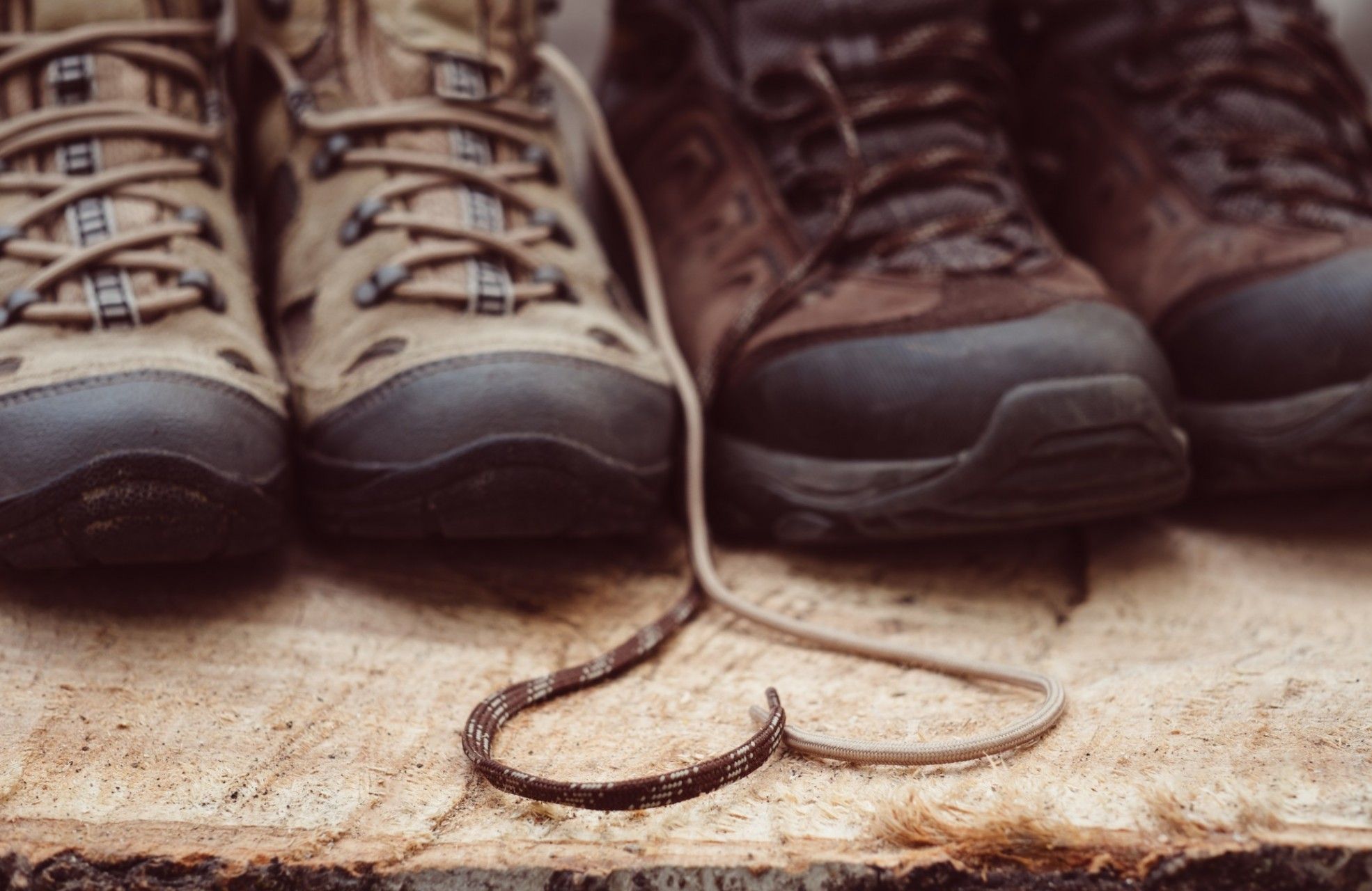You’ve planned your Cornish walking holiday – now it’s time to prepare your walking kit. The best investment you can make before striding out along Cornwall’s coastal paths is a good pair of walking boots. Here’s the Western Discoveries guide to buying the right walking shoes or boots.
It goes without saying that your walking boots need to be the right size. However, it’s not as simple as saying, “I’m usually a seven – this’ll do”. Walking boots have to really fit.
Our feet swell more as the day goes on, so try new boots in the afternoon, not the morning. Also, don’t assume that what’s good for the left is good for the right. Most of us have slightly different-sized feet, and you’ll need to put on both boots to find a comfortable pair. Always try on walking boots with your usual hiking socks.
Take your time when you put them on. Get the tongue in the right place and lace them up as you would before going on a walk. Try wriggling your toes: can you move them? If you can’t, discard that pair and try another.
Next, how’s the heel? If this is loose, it could rub and cause blisters. If it’s tight, ditto. So, you’re looking for a snug fit that doesn’t feel squashed (you’ll know it when you feel it).
If you’re going for a boot rather than a shoe, how does it feel around your ankle? Again, aim for the middle ground – it needs to support but not constrict.
Remember: too-large boots can be made to fit with an extra insole or a pair of thicker socks. Too-small boots will never feel right.
Different walking boot styles and materials will affect how comfortable you find them. We all have our preferences for boot fabrics and construction, and we’ll take a look at this next.

The traditional leather walking boot is tough and provides great support. It’s a real design classic of the outdoor world, which has stood the test of time by being waterproof, breathable and extremely robust.
However, leather boots can cost more and are the heaviest type to wear. If you like flex in your footwear, don’t buy leather boots.
Fabric boots are much lighter, and many walkers find them more comfortable. They’re more breathable than leather, and you’re less likely to get hot feet in the summer. You can also pick up some great-looking designs, and there’s a wide choice of colours.
Fabric walking boots and shoes are not as waterproof as leather boots, so look out for designs with waterproof membranes (made from GORE-TEX® or similar). Because they’re not as robust as leather, they’re better suited to some terrains than others.
If you’re buying boots for your Cornish walking holiday, take a look at our walking itineraries before buying your boots: they’ll give you a good idea of the terrain you’ll encounter.
For well-trodden pathways, a fabric boot is a comfortable option. You don’t need to go overboard with ankle support and bombproof leather uppers; and a fabric design will give you lightweight flexibility. Our Marazion to Lizard walk is a good example of a fabric boot walk: it’s mostly along clear pathways, with a few uneven sections and some hills.
If you’re heading off on a challenging hike, rigid boots are better. You’ll need a stiffer sole and better ankle support if you’re walking on uneven ground. With rocks, mud and plenty of incline, our St Ives to Porthcurno is a tough walk that needs boots to match.
There’s no reason why you can’t have own several pairs of boots: you could have a summer and a winter pair, for example. Because we take care of the luggage, you can pack both pairs for your Western Discoveries walking holiday, and match them to the terrain for that day.
Back in the day, tough new leather boots needed “breaking in”. This isn’t really the case with most boots these days, although you still need to wear them around the place for a few days before heading out for an epic walk.
Start by wearing your boots around the house, initially for an hour or so then building up. Try them at different times of day (such as towards the end of the day when feet are tired and more swollen). Go up and down the stairs, do the housework, dance around a bit… If everything’s good, start wearing them for short walks outdoors.
If they’re not feeling quite right by now, don’t be optimistic that they’ll suddenly be OK. Nothing – not even rain, getting lagged in mud, or gulls nicking your pasty – ruins a walk like a pair of uncomfortable boots.

Please contact us at Western Discoveries to find out more about walking in West Cornwall. We’re always happy to discuss terrain and boot choices with you.
Be the first to receive all the Latest News and Special Offers...